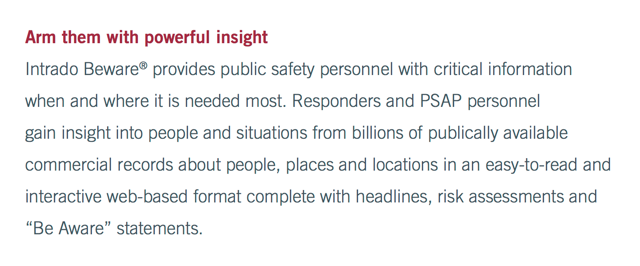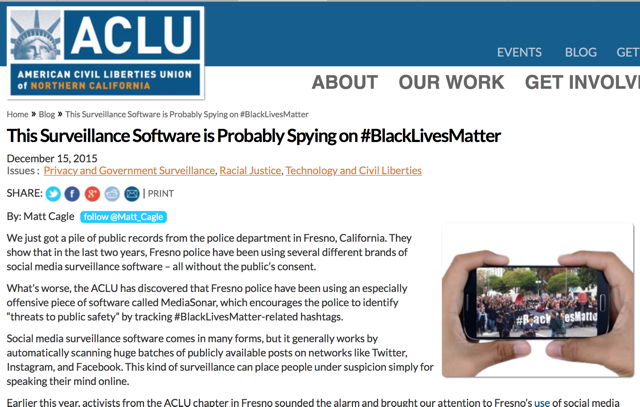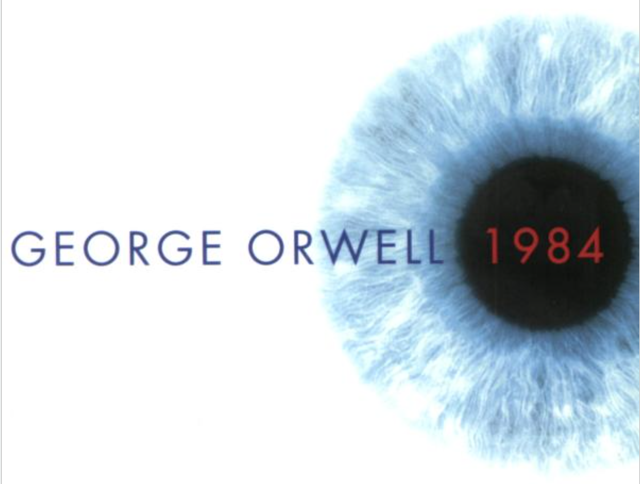A recent story from The Washington Post gave the public a rare inside view of the social media monitoring capabilities of the Fresno police department, which is trialling a controversial piece of software called Beware. The piece has caused quite a stir over the software's supposed proclivity for civil liberties violations.
But how is this program different from other social media monitoring done by the police? Is Beware an actual civil liberties threat? Or is this whole thing being overblown? And what can you do to keep the police from digging through your social media posts?
An Obvious Tool for Police Departments
Law enforcement officers have likely been using social media for intelligence gathering since it became mainstream - even back in 2006, police arrested an underage boy in Colorado after he posted pictures of himself on MySpace with a number of firearms.
Social media's use in investigations has only become more commonplace since then, and there are a number of stories testifying to its efficacy. In 2014, New York police seized over 250 illegally sold guns after an extensive investigation that started when officers noticed an aspiring rapper had posted images of guns in his studio on Instagram.
There have been countless reports of students being arrested for posting bomb and other threats against their schools, and many arrests after posts that advocate violence against police. Even joke bomb threats have resulted in arrests. This isn't limited to the US, either; there's ample precedent in the UK for being arrested based upon saying something "grossly offensive" or threatening on social media.
Social media has become an important locale for gang posturing and threats, and police in cities like Chicago and New York have made a surprising number of arrests based on Facebook, YouTube, and Instagram posts in which gang members are either doing something illegal or expressing their intent to do so.
All in all, social media monitoring is an obvious choice for law enforcement - if people are posting their illegal exploits on Facebook, where the entire world can see them, it's going to pay off to monitor it.
The Issue with Beware: An Algorithmic Approach
So if police have been monitoring social media for years, why is Fresno's approach making headlines? Part of the answer lies in the fact that Beware uses an algorithmic approach to monitoring social media. Many simplistic social media monitoring tools (even those used by social media marketers) just look for specific keywords or patterns in the data, something that individual police officers do on a much smaller scale.
But Beware, when given an individual's information, calculates a "threat score" based on, according to Intrado's website,
...billions of [publicly]-available commercial records in a matter of seconds—alerting responders to potentially dangerous situations while en route to, or at the location of, a 9-1-1 request for assistance.
The billions of points of data come from social media posts, arrest and other public records, commercial databases, and many other types of data, though exactly where they come from and how they're translated into a green, yellow, or red threat score is a trade secret guarded by Intrado, the maker of the software.
How the police use this scoring system, however, is obvious - if a 911 caller or someone involved in the call has a yellow or red threat score, officers will be more wary going in. Which could very well mean being more highly armed and ready for trouble, a mindset that could have serious consequences for the caller.
In 2007, police were investigating the theft of two PlayStation consoles on a college campus when they discovered pictures of the suspect posing with a number of firearms on social media. They sent a SWAT team to the suspect's house, and another student ended up dead after an officer mistook the sounds of the battering ram used to gain entrance to the house for gunshots. This is exactly the sort of heavily armed response based on information gleaned from social media that has people worried.
The Post's story mentioned that a woman who tweeted about the game Rage and a man who lived in a house previously occupied by a person of interest both had elevated threat levels. Neither of these people would have been given a second thought by a flesh-and-blood officer, but Intrado's software could put officers on edge if they were to respond to a call from either of these citizens.
What's worrying to many people is that threat score calculations are being made by an algorithm developed by a single company that's not going to share its equations anytime soon - Beware is a total black box. Algorithms already control significant portions of our lives, but the fact that they may now put us in a dangerous situation is starting to get people's attention.
Algorithmic approaches to policing have drawn a large amount of criticism in the past, with some critics saying that they're prone to racial profiling, and others going on to say that the tools are flat-out "racist." Research on the topic is inconclusive, with some studies showing a decrease in short-term crime and other showing no significant effect of the predictive technology.
A Legacy of Surveillance
The analysis of "billions" of data points brings to mind some previous programs undertaken by the US government.
Total Information Awareness (TIA) was an initiative undertaken by the Information Awareness Office in the early 2000s that collected information on credit card purchases, magazine subscriptions, web browsing, e-mail, academic grades, travel, legal events, and other types of information for storage in a central database. Even after being rebranded as Terrorist Information Awareness, TIA was shut down due to public outrage over the frankly Orwellian idea.
One of DARPA's research projects looked into a similar system called LifeLog that would collect...
...every activity and relationship a person engages in. This is to include credit card purchases, web sites visited, the content of telephone calls and e-mails sent and received, scans of faxes and postal mail sent and received, instant messages sent and received, books and magazines read, television and radio selections, physical location recorded via wearable GPS sensors, [and] biomedical data captured through wearable sensors.
Obviously, Beware and other social media monitoring solutions aren't nearly this advanced, and don't have quite the same potential for privacy violations. However, the US government's pattern of creating privacy-violating pieces of software that either aren't well understood by the public or are kept under wraps has a lot of people nervous. And social media monitoring by the police is looking like it could become a civil liberties battleground.
Many people have already taken sides. The large number of social-media-monitoring programs available indicate that many police departments and other organizations (including schools) are interested in using this technology.
On the other hand, groups like the ACLU have already spoken out against the tech, saying that it could allow police departments to "place people under suspicion simply for speaking their mind online." The ACLU's blog post on the topic was provocatively titled "This Surveillance Software is Probably Spying on #BlackLivesMatter," though there's little evidence that this is the case.
And, of course, all of the information pulled in by Beware is "commercially available." Exactly what that means is difficult for anyone to know, as the types of data that social networks sell seem to change all the time. As we've seen in the past, it's not hard to get information that a user thinks is private just by asking the right questions and using the right tools.
I wouldn't be the first person to associate Beware and other social media monitoring solutions with Minority Report's pre-crime or 1984's thought crime.
The sophistication of software like Beware is getting to the point where it can likely draw conclusions based on the things you don't say, but only imply. Intrado and other manufacturers don't want their software linked to dystopian science-fiction novels, but the connection is obvious.
Lessons Learned
Whether you're worried about the potential privacy violations caused by social media monitoring software in the hands of law enforcement or not, this should serve as a reminder that whatever you put out on Facebook or Twitter isn't just available to your friends. It's out there forever, and it's likely in the hands of a wide variety of people and companies.
The best thing you can do is to not post stupid things on social media. Don't make jokes about doing something illegal. Don't advocate violence against police or members of the military. Don't post pictures of yourself that could be construed as threatening (especially with guns—just don't post pictures of yourself with guns). A lot of this is common sense, but Fresno and their use of Beware should underline the importance of these sorts of protective measures.
This is also an important issue to keep in mind in the face of the upcoming US presidential election (where social media is also an extremely important tool, interestingly). This issue could very well come to a head shortly after a new president is sworn in, and how it plays out from there may depend on who's sitting in Oval Office. It may seem like a minor issue now, but this could be a very big deal in the near future. It's worth keeping an eye on.
What do you think about police departments monitoring social media? Do you feel that they're justified in using an algorithmic approach? Or do you think it's likely to lead to racial profiling and inaccurate judgments? Should we be worried about the progression of this kind of software?
This is a complicated issue, and I'm not even totally sure how I feel about it. It leaves too much in the hands of an algorithm that surveils people without their knowledge. But it could also help save the lives of officers headed into dangerous situations. Help me hash it out in the comments below.
Image Credits: Scott Cornell via Shutterstock.com, Ivelin Radkov via Shutterstock.com.








